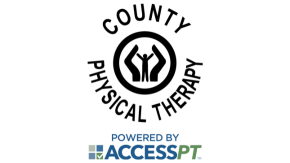When patients come to physical therapy, pain is typically the primary complaint, often leading to reduced physical function during daytime activities. However, pain can also cause reduced sleep quality and can even worsen overnight if sleep is restless due to discomfort. If you have pain while you are sleeping, your sleep position could be contributing! Here are some tips to help improve your comfort so you can get a better night’s sleep.
Shoulder Pain:
- Sleeping on the painful shoulder is often not tolerated, so many people will adjust to sleep on the opposite side or on their backs. In this case, supporting the shoulder can be helpful to avoid irritating the shoulder overnight. If sleeping on your back, place a small, thin pillow under the elbow of the painful arm. This can help take tension off the front of the shoulder and make it feel more supported and comfortable.
- Often, side sleepers feel like there is no comfortable, supported position for the arm. Use of a large body pillow can be helpful to cradle the arm beside the body. Just pretend like you are hugging the pillow in front of you.
Neck/Jaw Pain:
- Neck and jaw discomfort can present in any sleep position but is usually worst when stomach sleeping.
- Side and back sleeping tend to be more comfortable positions but often require different types of pillows. In general, a softer pillow is better for back sleepers to avoid excessive neck flexion while a firmer pillow is better for side sleepers to prevent the head from hunching to one side.
- If sleeping on your back is uncomfortable, rolling a small hand towel and placing it in the curve of the neck can help support the neck. More durable options are available if this trick works.
- If you have neck pain and sleep on your side, check if you tend to put your hand under your pillow; if you do, you might benefit from a firmer pillow.
Low Back and Hip Pain:
- Stomach sleeping can be bothersome to the back but may be helpful in some cases, such as shortly after some types of disc herniation. If this position elicits numbness or pain in the legs, consider another sleep position.
- In individuals with lumbar spinal stenosis, sleeping on your back with the legs bent is often most comfortable. Side sleeping with a pillow between the knees may also be comfortable.
- Hip pain often limits side sleeping comfort, especially on the painful side. Placing a pillow between the knees often helps reduce tension on the hip and subsequent pain.
As always, if pain remains bothersome or continues to worsen despite modifying activities during the day, further assessment by a skilled professional could be beneficial to help identify treatment strategies to reduce discomfort. ACCESS PT’s therapists are well versed in managing all sorts of orthopedic conditions and would be able to discuss your pain to get you moving (and sleeping!) better. Call (888) 989-3323 to schedule an evaluation.



